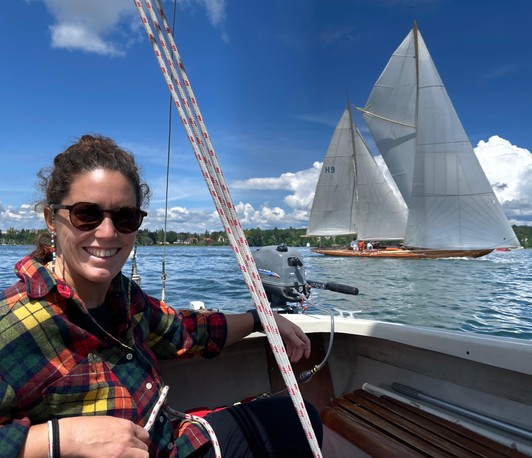A multi-scale approach to studying interspecies interactions in animal collectives
Institute Seminar by Angela Albi
- Date: Nov 26, 2024
- Time: 10:30 AM - 11:30 AM (Local Time Germany)
- Speaker: Angela Albi
- Cognitive scientist by training, biologist by title. I enjoy photography and videography of all kinds. When I am not on land, I am likely on a sailboat or underwater. I am now a post-doctoral researcher interested in how and why animals move together and how their interactions shape their group behaviour. My primary research project explores predator-prey dynamics between juvenile blacktip reef sharks and their schooling prey in the shallow waters of the Maldives. To study this phenomenon, I use computer vision and machine learning techniques to process and analyse camera and drone footage.
- Location: Bückle St. 5a, 78467 Konstanz
- Room: Seminar room MPI-AB Bücklestrasse + Online
- Host: Max Planck Institute of Animal Behavior
- Contact: apaula@ab.mpg.de

Coordinated motion in animals often results in mesmerizing patterns and plays a key role in predator avoidance or disease transmission. To study collective movement, we can now use advanced image-based analysis software and algorithms and quantify behavior in greater detail than ever before. In my research, I use computer vision and machine learning algorithms to analyse phenomena at different scales, from detailed individual behavior to emergent collective patterns. Starting in the lab, during my PhD I developed experiments and quantitative behavioral analyses to investigate how parasitism affects the individual and social behavior of guppies. However, to understand how the environment shapes behavior and how behavior affects individual fitness, we need to study animals within their natural habitats. Therefore, for my postdoctoral research, I am using drone imaging to analyze collective predator-prey interactions of blacktip reef sharks and bait fish schools in their natural habitat. This approach allows me to explore questions about coordinated intra- and inter-species hunting behavior, as well as collective evasion strategies of the schooling prey. With this talk, I will share insights from my work on how I use imaging technologies to bridge the gap between laboratory studies and field observations. By integrating detailed behavioral analyses at both individual and collective levels, we can gain a deeper understanding of the complex dynamics that govern animal behavior.
The MPI-AB Seminar Series is open to members of MPI and Uni Konstanz. The zoom link is published each week in the MPI-AB newsletter.